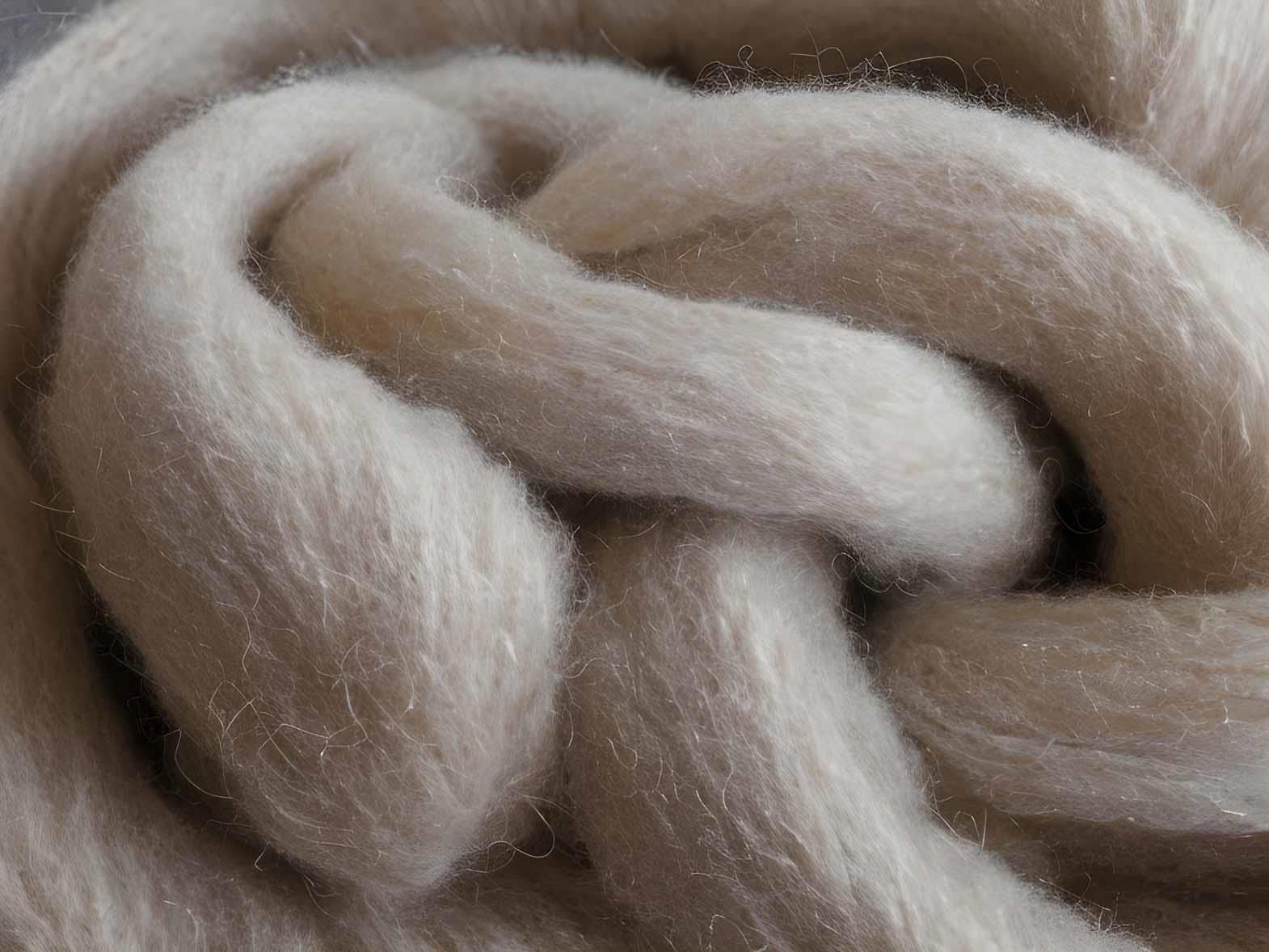The hue and cry of sustainability and natural fabrics is why designers and manufacturers are employing biodegradable fibers and processes. There are varieties of animal and plant fibers that provide an array of fabrics. One such fiber is "mohair." The recently autumn/winter 2014-15 collections saw the use of the fiber for creating spectacular pieces for winter wear.
Renowned designer Stella McCartney showcased a luxurious mohair blanket coat with fringes, the Italian high-end label Gucci unveiled the collection featuring a mohair tuxedo, and ZZegna displayed a blurry tartan mohair overcoat in the recently concluded fall/winter collection. The mohair fibers have been used by prominent labels and have restored their place as a luxury and quality raw material for developing fine fabrics and garments.
Known to be one of the oldest forms of fibers used in making fabric, mohair is obtained from the Angora goats and was produced only in Turkey for thousands of years. However, the Angora goats are said to be of Tibetan origin, who later found their way into Turkey. The Mohair of the Turkish fleece was of the most refined quality and was exported everywhere around the globe. During the 19th century, the breed was introduced in South Africa and the United States. The goats are shorn two times in a year and give a yield of three to five kilograms. There are now Angora goat farms in New Zealand too, those yield two to three kilograms per fleece.
Mohair, derived from the Arabic name of the goat "mukhayyar," is the warmest of natural fibers and has a natural shine which is why it makes it into the list of luxurious fibers in textiles. The fiber adapts to all kinds of dyes very well and hence is preferred to make textiles compared to wool and alpaca. The unique feature of this fiber is that it keeps the wearer warm even while the fabric is wet. The fiber is also famous for its anti-pilling, anti-matting, and anti-crushing qualities.
The fabrics and textile products made from Mohair last longer and are extremely durable because of its high tensile strength, which is even higher than Merino wool. Soft to the touch and feel because of its thin surface scales, the fabric is extremely comfortable to wear. The crease-resistant, moisture-wicking, and flame-retarding features of Mohair make it an ideal fabric for making upholsteries and home textiles. The breathability of the fabrics made out of Mohair makes them lightweight, and hence it is used to make beautiful blankets and warm clothes.
The assessing of a better quality yield depends on the measurement of the micron of the fibres. The lesser the micron the finer and better the quality of the yield. The superfine kid Angora goats yield the most premium quality produce which is of 23 to 25 microns. Next best is the kid which is of 26 to 28 microns, followed by young Angora goat of 20 to 31 microns and Adult goat of 32 to 34 microns. The superfine kid and kid are used to make yarns, blankets, and high quality suits in the luxury market. The thicker quality is used in manufacturing carpet, rugs, heavy fabrics for making jackets, and coats. Pile form of woven mohair fibres are used in making garments, dresses, summer weight-suits, knitted clothes, and knitted yarns. Because of its durability it is used as lining in shapewear too. Blends of wool and best of Mohair fibres are used to create high-end blankets and home furnishings. Hand weavers and designers in Japan and Italy use 20 percent Mohair blend in luxury fabric in order to add a fine sheen and make the garment crease-resistant.
The processing of Mohair is equally important to determine the quality of the Mohair fibre. In order to remove the brown color of the fibre, the eradication of vegetable matter, impurities, natural grease, and dirt is necessary. A clean fleece is 70 to 80 percent of its original weight.
Unlike age back when the Angora goats were bred and found only in Turkey, today they can be found all across the globe. The current leading producer of the Mohair is South Africa, accountable to 60 percent of the total output in the world. The Eastern Cape region of the country has a population of 850,000 Angora goats. Succeeding it is Texas, in United States that has a herd of 200,000 goats. The biggest consumers of Mohair are the United Kingdom, Belgium, and the Netherlands.
Mohair due to its lustrous and warmth giving qualities has resulted in becoming an ideal substitute to wool and hence has made its way into high-fashion clothes and luxurious home textiles. Just like wool, it reacts when prone to heat, sunlight, aging, and moths, which makes it resilient and strong.
References:
1. Wildfibres.co.uk
2. Mohair.co.nz
3. Britannica.com
4. Naturalfibres2009.org








Comments